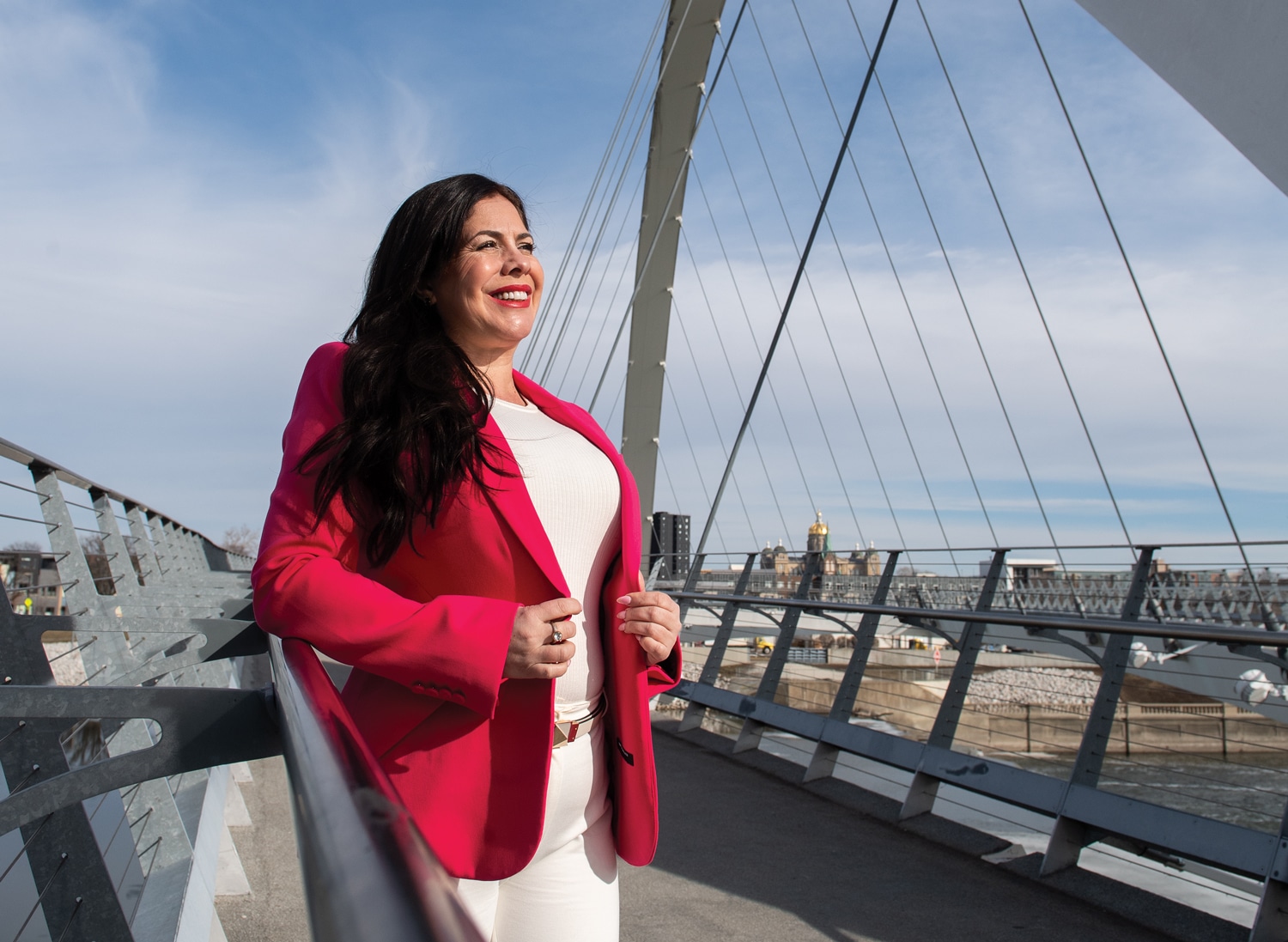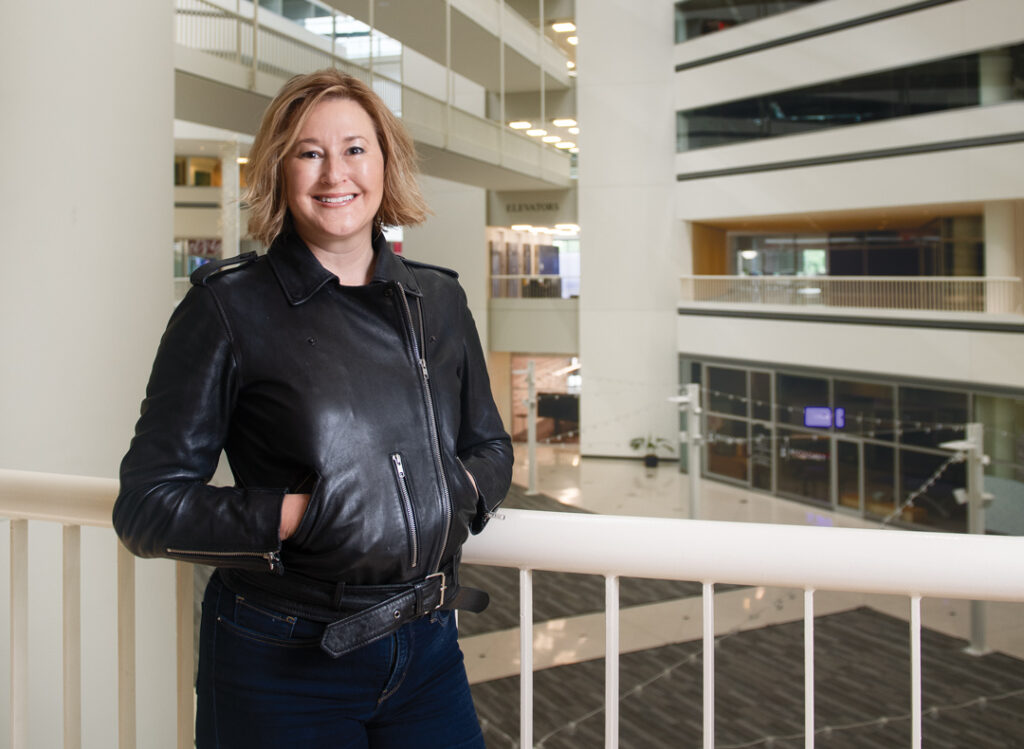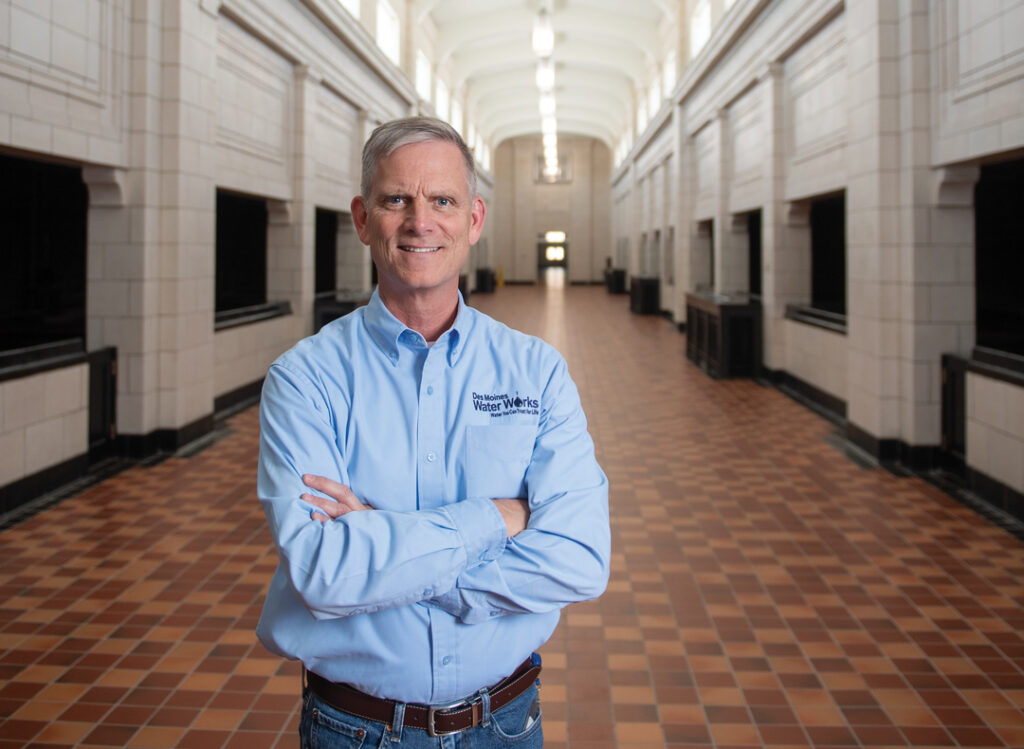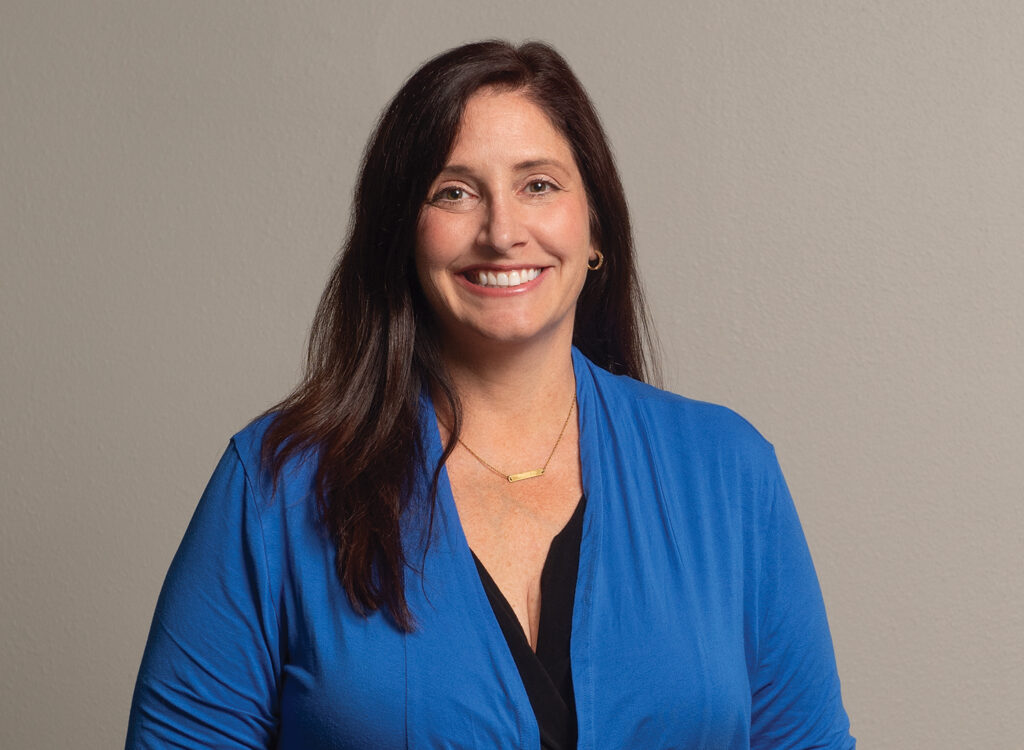Construction leaders say despite continued workforce challenges, future for industry is bright

Michael Crumb Feb 16, 2024 | 6:00 am
11 min read time
2,608 wordsAll Latest News, Business Record Insider, Real Estate and DevelopmentThe shortage of labor that was a problem before the Great Recession and was later exacerbated by the COVID-19 pandemic remains a challenge for the construction industry. But industry leaders say there are opportunities for the industry to continue to grow and expand in 2024.
The industry never recovered from the exodus of workers from the trades in 2008 to 2009 as the housing bubble burst, and the pandemic forced some workers from the baby boomer generation to retire early, further affecting the available workforce, leaders said. But as the economy and the sector rebound following the pandemic, there’s opportunity to build on an already strong foundation.
The Business Record reached out to leaders at four Central Iowa construction companies to see what’s on their minds and take the sector’s temperature for 2024 and beyond. We spoke to Mike Tousley, executive vice president and Iowa general manager at the Weitz Company; Mike Harryman, general manager at McGough Construction; Mike Espeset, president of Story Construction in Ames; and Perlla Deluca, president of Southeast Constructors and founder of the Iowa School of Construction. Here is some of what they had to say.
Their responses have been edited for brevity and clarity.
What areas of strength or weakness are you seeing and what are the contributing factors?

Harryman: Recently, we have seen growth and strength in high tech, ag-industrial, health care and education. These sectors are pushing the envelope in their respective industries by expanding or changing the way they do business. This is also creating the need for new facilities. We have seen some weakening of corporate office and light industrial work. The remote work movement brought on by the pandemic has obviously had a significant impact on corporate vacancies, not only in Iowa but throughout the country. There is little desire to build when great space is readily available at a discounted rate. For the most part, the weakness in light industrial is a result of a surge in available square footage due to new construction and interest rates driving up the cost of construction.

Tousley: It really depends on where you’re focused in the industry. Overall, on a scale of 1 to 100, in general [industrywide] we’re probably somewhere between 40 and 50. For Weitz, we’re actually more around 90, so things are going extremely well for Weitz. It’s hard to believe going back to 2020, it was our best year ever up to that point [before COVID], and we’ve seen continued growth every year. We’re looking at probably 20% growth in 2024. Interest rates are probably driving a lot of developer-type work, so contractors doing work for developers are probably seeing a different landscape than we are. We’ve seen a definite slowdown in senior living facilities and to a certain degree student housing. But the hottest markets we’re in are the data center and aviation.
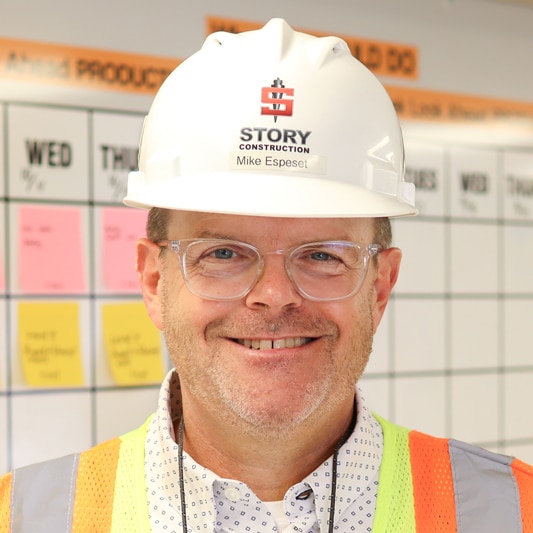
Espeset: Generally, publicly funded projects. They’re less subjected to interest rate pressures and they take longer to develop. So in this time of interest rate pressures, they are less impacted by that. Secondly, an issue in our industry is those private owners that want to create some sort of labor leverage by facility efficiency, system efficiency, process efficiency, or opportunity, so privately funded projects continue to be strong. If they can make the numbers work they’re going to make the numbers work. There tends to be less senior living. That whole industry is struggling.
What economic factors do you monitor as you make decisions about your company’s future? How have higher interest rates and inflation affected the industry?
Harryman: A couple of key economic factors l look at, aside from interest rates and inflation, are population growth and the employment rate. Solid population growth and low employment rates are two of the best growth indicators for business, so I pay close attention to those. Higher interest rates and inflation have critical impacts on the construction industry, and we are experiencing it here in Iowa. Most construction projects are funded through construction loans, and when the cost of money is higher due to rapid inflation, project budgets are put under a lot of pressure. At a minimum, project owners are taking on more risk when making assumptions about what total project costs really are. It’s clear construction has slowed both on a national and a local level due to a higher cost of goods through inflation and a higher cost of money through interest rates. That said, the construction industry in the Des Moines area remains fairly steady. It’s slowed down in recent years, but we’re continuing to grow to some degree. First, Des Moines tends to be fairly conservative with business dealings despite market fluctuations. So, a dip felt nationwide won’t impact us as dramatically here.
Tousley: Interest rates drive a lot of what we do, so we’re keenly focused on that. The other thing is there are various cost indexes we look at for various products used in construction. Another one we watch, there’s an index out there called the Architecture Billings Index, and that has to do with design firms, what their monthly billings look like, and that index is at 45.3. And they say anything less than 50 indicates billings for their services are soft and that’s a great predictor for us. For us, without design we can’t build. I think we’ll see an uptick in that index and others as the year progresses. And if the feds take some action on interest this year, I think that will continue to be a positive sign for our industry for the foreseeable future.
Espeset: While our product ends up being the built environment, we’re really a service industry, so we need to respond to those influences that take our customers certain directions. We monitor how our customers are doing and what they’re needing and then adapt our process and our resources to what they need. At the end of the day, if we don’t have what they need, there is nothing for us to do. Our industry, a long time ago there were not that many contractors but they did a wide variety of things. Through time, our industry has specialized and fractured into many specialties and anymore a lot of general contractors don’t have labor to execute work. We’re trying to grow that labor pool to continue to execute work. We think there is always a seat at the table for people that can perform work.
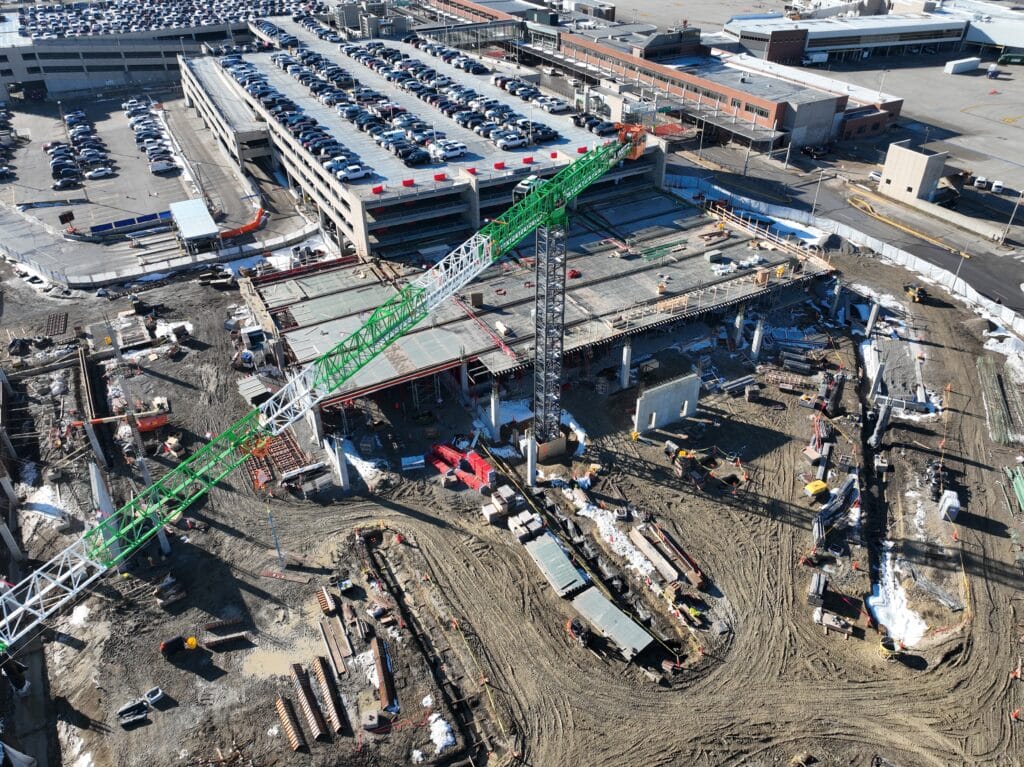
An aerial view of construction on the Des Moines International Airport terminal parking garage. Image provided by The Weitz Company, which has the contract for the project.
What challenges exist in the construction industry?
Harryman: In general, the construction market is getting a bit easier to manage because there are not as many supply chain issues that we were facing during and just after the pandemic. We still face many challenges. One of the most pressing is finding quality craftspeople at scale for all of the projects that need workers in the area. You could take that as an indicator that our market is steady, as well. We’ve known for years that the retirement rate among skilled trades is higher than the replacement rate. To that point, I believe the Des Moines Construction Council and Master Builders of Iowa are doing a great job growing interest in the skilled trades among young people. More emphasis needs to be put on what type of experience we’re requiring. At McGough, we know we can teach the construction background and skills. What we’re really looking for are talented, hardworking, motivated individuals who are willing to dig in and get the work done.
Tousley: I think manpower is the biggest challenge, and that’s not new for our industry. There’s just way too many people getting out of the trades versus coming in. And that just continues year after year after year. I will say there’s a lot going on, though. I think there are a lot of local programs and marketing campaigns to attract students to the various trades in our industry.

Deluca: Labor shortage was a challenge before COVID, and it obviously got worse after COVID, but it’s something that if materials [prices] go up, you’re going to shop around and find the best price you can, but if you don’t have guys show up, who’s going to do the work? So it’s been a struggle. Our older guys are retiring and there are not people in the middle who are in their 30s or 40s, but with younger employees, they still need to be trained, but we also have more technology. I believe that if we start training high-schoolers now, in 10 years we’ll have a good workforce again. The other thing is women only make up 10% of the construction workforce. In England and South America, they make up 50%, so I think we could fill some of the gap by getting more women into the industry.
Espeset: [Workforce] is weaker [than before the Great Recession]. While we may be at the same number, we’re not the same at capacity or skill set. The boomers are retiring, so we have lost a lot of knowledge as an industry. We have young people coming in, but they’re not at the same capacity, skill set or place in life. Our numbers are still not back up to where they were probably at the peak, or if they are, they’re only moderately there, but the composition of the labor force in the entirety of the industry is very different. We need to help people in this industry grow quickly and advance quickly to be able to fill the hole left by the boomers.
What opportunities exist for the industry?
Harryman: I think we need to continue to put more emphasis on diversity within our construction and skilled trade industries. Certainly from a race and ethnicity standpoint but also from a gender and background standpoint. I’ve been encouraged to see the number of women I work with increase over the years, and they’re some of the most talented people I know. The more diverse our workforce, the stronger it will be. A great opportunity for Iowa is our Construction Manager at Risk [CMaR] legislation that passed in 2022. The CMaR provides consultant services to the government entity from the development and design phases and works collaboratively with the entire project team. I think CMaR does a lot in terms of adding value for the project owner and ensuring they have the best team in place for their project. It helps everyone evaluate financial considerations from the outset and helps contractors’ abilities to execute a project to be evaluated more objectively. It is a great added tool in the toolbox of project delivery methods for public owners in Iowa.
Tousley: The biggest opportunity is how we apply technology into our industry. You hear about 3D, 4D and 5D modeling on construction projects, and we are involved in all of those, and the biggest impact we’ve seen is the ability to prefabricate certain components of a project. Anytime you can prefabricate things in an off-site, controlled environment, productivity increases, it’s a better product and you end up with a safer environment in which to work. We are looking for opportunities on every project to prefabricate as much as we can. The Hilton Hotel we built across from our office, we used what we call bathroom pods. Essentially, 300 of the 330 bathrooms were built off-site and they were 98% finished. It came as a module. We lifted it up and rolled it into place, and made some electrical and plumbing connections.
Deluca: There’s definitely opportunities. There’s more opportunities for federal work. The laws changed a little bit recently where they give more contracts to small businesses. And I think there will be a little shift where we will be able to charge more for projects and have more offers on projects, too. Even with inflation, it doesn’t apply for all construction companies, but in my case I think we’re positioned well.
Espeset: A big opportunity for everybody is figuring out how we collaborate better and coordinate better as opposed to compete better. While everybody needs to be competitive, the greatest value is in cooperating and collaborating more than anything else and the industry has figured out a way to leave a lot of money on the table and not spend a lot of money on nonproductive pursuits. There just isn’t enough resources to go around so we need to collectively make better use of the resources we have.
What are advancements in technology that are making the industry more efficient and sustainable?
Harryman: From my perspective, I will say that AI — both in how it can solve construction issues as well as how it can address corporate construction services issues — has been impressive. I have seen it respond effectively on both legal and accounting matters as well as matters related to construction administration. It is fascinating and efficient. I have also been impressed with software that can take survey data from owners and end users of a facility and turn that into a complete and accurate reflection of a building’s programmatic space needs.
Deluca: We don’t waste as much time in meetings and doing inspections [in person]. A lot of stuff has moved virtual and online. Technology is different now for some of the testing we have to do for some of our projects. Technology helps, but it’s not going to solve the problem when it comes to the labor shortage.
Espeset: We’re two ends of the spectrum. The primary technology we use is Post-it notes, Sharpies, facilitated meetings and team wisdom. It’s super low-tech. The second is we do some 3D modeling, so digital modeling, building information modeling, that helps people more quickly see what we’re doing as compared to having to interpret through 2D plans but we’re not leading-edge technology where we use technology that supports work.
What is your forecast for the industry for the next year?
Harryman: I think 2024 is going to feel a lot like 2023. Interest rates are steady but higher than in years past, so owners will remain cautious with their money and Iowa will remain in the same growth (albeit slow) mode it has for the past couple of years. The generally conservative way we do business in Iowa is fortunate in that we can sustain growth and tend to sustain growth for longer periods of time than many other places around the country.
Deluca: I think it’s going to be good financially in the sense we have a backlog of projects that didn’t happen in 2021, so we have volume but are we able to execute the projects on time and on budget.
Espeset: It depends on who you are and the market where you are. I think the work opportunities will be similar but they won’t be the same. Depending on the diversity of your capacity to serve, you might be OK or you might be a little less well off. We don’t do residential, but there’s not as much of that to do. The earthwork contractors had phenomenal weather last year and they burned through a bunch of work and they’re not carrying much over to this year, so they’re in a spot that’s maybe a little less prosperous, but if you’re doing data center work, and we don’t do any of that either, but if you’re doing data center work, there’s no foreseeable end to that. So a lot depends on who you are, what you do and where you do it.

Michael Crumb
Michael Crumb is a senior staff writer at Business Record. He covers real estate and development and transportation.

